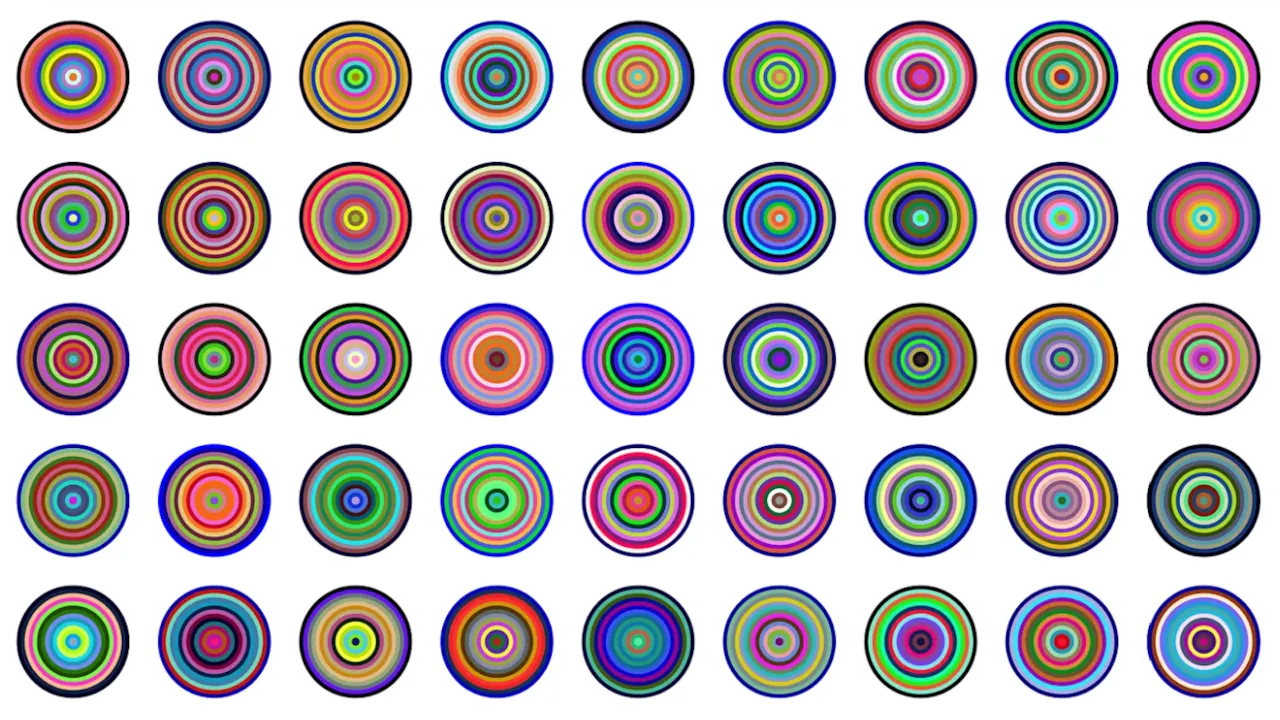In spite of crypto’s enduring winter and the ever-spiraling NFT market, on-chain generative artwork has seen something of a renaissance in the last year. Now, a new platform with a major backer aims to take on the stalwarts of the space.
Led by boutique, curatorial collectives like Art Blocks and globe-trotting experiential collections like Bright Moments, generative art pieces—digital works created by computer code, that are only realized in their final form by a randomized generation that takes place at the time of minting—continue to fetch record prices and regale art world elites.
Much of the generative art movement’s success has thus far stemmed from projects associated with a certain level of curatorial authority and exclusivity. Highlight, a digital art marketplace and artist tool suite debuting today, aims to shift that paradigm.
48 hours until our Ethereum-based generative art platform is open for all
Our genesis project, “Sum” by @DuaneKing, is an onchain SVG representation of your unique wallet address
It pushes all the boundaries of what generative art and personal identity mean for Ethereum👇 pic.twitter.com/xlkPKfBfX1
— Highlight (@Highlight_xyz) July 24, 2023
It claims to be the first-ever “open access” generative art platform launched on the Ethereum blockchain. The company, which is backed by prominent venture fund Haun Ventures and raised $11 million in 2022 with the broader aim of launching no-tool Web3 tools for creators, says it has created a platform that will do away with many barriers to entry across the generative art ecosystem.
“All the tools that exist on Ethereum at this point, they're not open access,” Highlight co-founder and CEO Nathaniel Emodi told Decrypt. “There are different levels of curation or gatekeeping. To us, that was a screaming opportunity.”
Unlike leading platform Art Blocks, which carefully curates the generative artists it spotlights for its most prominent collection—but also has secondary categories with less stringent requirements—Highlight will be entirely free to use and list on by any member of the public.
Simon De Mai, an artist who has launched projects on Art Blocks and will also release work via Highlight, told Decrypt that the upstart's model is a welcome shift from the norm.
"Releasing a project on Art Blocks today is an exciting but very challenging process, and they are very selective," he said. "New platforms like Highlight offer open access; artists are free to experiment and start their own projects in a more autonomous way and with less financial risk. I’m happy to see that this sense of openness is still present today, as it will definitely lead to a richer digital art landscape."
Most leading generative art platforms also charge artists a creator fee. Art Blocks, for example, levies a 10% fee on its artists for primary NFT sales, and a 2.5% fee for secondary sales. Highlight, by contrast, will request no such fee from artists who use its services. Instead, the site will generate revenue from a small fee charged to buyers.
Highlight will also provide users with a suite of tools designed to streamline and simplify the process of creating generative artworks, which can be fairly technical and involved. These tools, said Emodi, will simplify a process that could easily take an artist weeks or months to complete independently and reduce it down to minutes.
In addition to the Ethereum mainnet, Highlight will also support scaling networks that typically enable cheaper transactions—such as Polygon, Arbitrum, OP Mainnet (or Optimism), Zora Network, and Coinbase's upcoming Base.
The first project launching on Highlight today is "Sum" by artist Duane King, also creative director for the startup, with the pieces resembling rainbow-colored bullseye targets. But there's more than meets the eye: the colors and characteristics of each generated work are drawn from the minter's Ethereum wallet address string and other on-chain details.
"With 'Sum,' we wanted to flip the idea of scarcity on its head and instead focus on abundance," reads a post by King. "Abundance is a more appropriate representation of the diversity within the blockchain community and more fitting for the medium of long-form generative."

Despite the fact that Highlight’s raison-d’être appears decidedly populist, the platform is also partnering with a number of established generative artists who will debut new collections on the site this summer. Several of those artists, including De Mai, Melissa Wiederrecht, Emanuele Pasin, and James Merrill, have previously launched projects on Art Blocks.
A number of those artists gave input directly to Highlight’s team during the platform’s construction, regarding what they would want out of a generative art platform crafted to their needs.
Per Emodi, several artists requested a loosening of restrictions around the type of code able to be used in a generative art piece. Highlight obliged; now, artists on the site will be able to experiment with sound, image files, and several other types of media that have not yet found their way into the generative art mainstream.
“All of those things are outside of the existing definition of generative art, but it's art that these artists want to create,” Emodi said. “We think that will push the definition of generative art forward. And that’s really healthy.”
Editor's note: This article was updated after publication to include comment from artist Simon De Mai.
